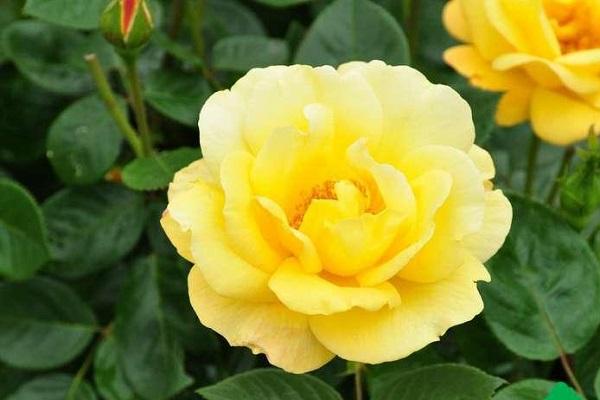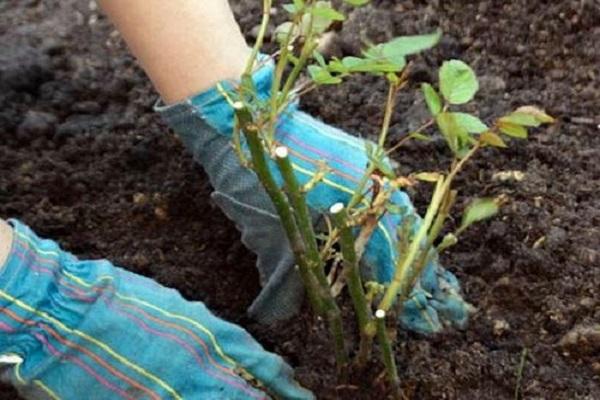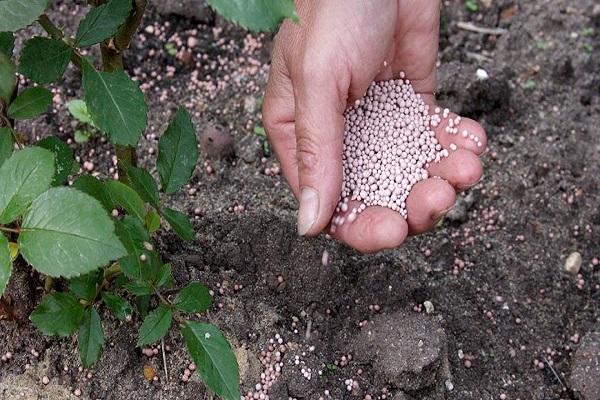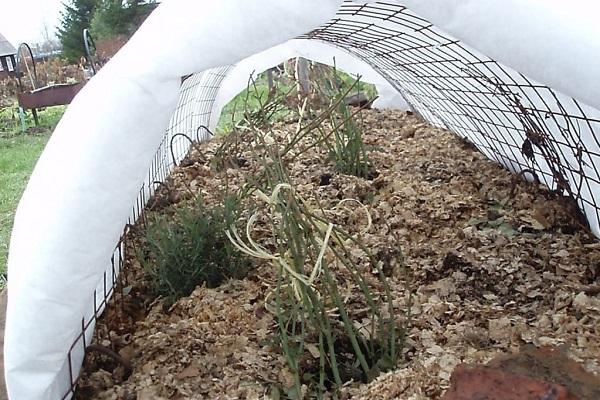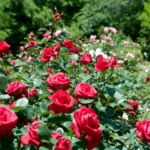Floribunda in translation means abundantly flowering; this type of rose was obtained by breeders in the process of crossing polyanthus and hybrid tea varieties. The first specimens of floribundas had one significant drawback - they completely lacked aroma. However, over time, this disadvantage was corrected, and flower growers were presented with samples of flowers with a delightful aroma. The Arthur Bell rose continues to be one of the most popular among gardeners today. Caring for it is no more difficult than for other varieties, and its brightly colored yellow buds attract the admiring glances of neighbors.
- Description of variety and variety
- Advantages and disadvantages
- The nuances of growing flowers
- When and where to plant
- Preparation of planting material
- Planting process
- Recommendations for plant care
- Watering
- Top dressing
- Trimming
- Loosening, mulching and weeding
- Preparing for winter
- Protection from diseases and pests
- How to propagate
- Using the floribunda rose Arthur Bell in landscape design
Description of variety and variety
A delicate fruity aroma and rich yellow buds are the hallmark of Arthur floribunda roses. But this is not the only reason why it is valued by flower growers all over the world. Its increased frost resistance characteristics and immunity to disease make it a welcome guest in any garden plot.
The Arthur floribunda bush is characterized by a standard form; its width does not exceed 70 cm; with proper care, the rose grows up to 1 meter in height. It is also decorated with dark green glossy and leathery leaves that are densely located on the branches. Arthur's buds are semi-double, with raspberry-colored stamens inside. The diameter of one flower is in the range of 10-12 cm, and there are about 20 petals in a bud. Moreover, several of them are formed in a brush.
The color changes to cream towards the edges of the petals, and if the bush is located in the sun, they fade and become completely cream. The flowering period of floribunda Arthur is quite long - the first wave of flowering occurs in July, the last buds fade in October. In total, 3 waves are observed during the season.
Floribunda also has a climbing variety, bearing the same name Arthur Bell. To grow it, you will have to build a support and be sure to tie up the branches.
Advantages and disadvantages
Gardeners noted both advantages and disadvantages of floribunda Arthur.
The advantages of roses include:
- The bright fruity aroma of flowers and the beauty of blossoming buds.
- Possibility of growing in regions with frosty winters.
- Immunity to diseases and resistance to pests.
- Long flowering period.
Among the disadvantages of roses are:
- Intolerance to cold winds and drafts.
- Sensitivity to close groundwater.
- Requirement for fertilizing and watering during the active growing season.
- The need for pruning and shaping the bush to create a decorative appearance.
- Numerous thorns on the branches, which can easily injure you while caring for the flower.
The nuances of growing flowers
First of all, the timing and location of planting are determined, and the soil and Arthur rose seedlings are also pre-prepared.
When and where to plant
Experienced gardeners recommend planting floribunda Arthur in the spring. During the warm season, the seedlings adapt to a new place and overwinter without problems.
You can practice autumn planting only in the southern regions where winters are warm.
The place to place the floribunda should be well lit, but only in the first half of the day; in the afternoon there should be shade in this area, otherwise the bright rose petals will fade and lose their attractiveness. Loamy and slightly acidic soils, the reaction of which does not exceed 6.5, are considered ideal soil for flowers. Floribunda should not be planted on rocky, sandy loam, marshy and clayey soils. They carefully monitor the groundwater level, if necessary, make a small elevation to place the rose, and equip the bottom with drainage.
Preparation of planting material
Before planting, inspect the roots of the seedlings, cut off dried roots and darkened areas. Treat the root system with any fungicide or growth stimulator.
Planting process
Algorithm for planting floribunda roses Arthur Bell:
- In the fall, they prepare the soil: they dig up, select the roots of weeds, and apply fertilizers.
- Holes are made with dimensions of 50 x 50 x 50, and a distance of 50 cm is also left between them.
- At the bottom of the holes, first lay out a drainage layer, then compost and phosphorus fertilizers.
- Pour a layer of fertile soil into a small mound.
- A rose seedling is placed in the center and its roots are carefully straightened.
- The remaining soil is poured on top and pressed down a little with your hands.
- Moisten the plant generously and lay out a layer of mulch.
Advice! When planting, make sure that the grafting site goes 3-7 cm underground.
Recommendations for plant care
The duration and abundance of flowering, as well as the beauty of rose buds, depend on properly organized care.
Watering
Floribunda Arthur needs abundant moisture throughout the entire active growing season. They stop watering the rose only in the fall, before preparing for wintering. The condition of the soil is especially monitored during dry periods; the ground should not become covered with a dry crust. On average, roses are irrigated once a week, and only in the evening. Root watering is used, since liquid that gets on the leaves and buds will provoke an outbreak of fungal diseases. To do this, use a watering can with a long and narrow spout.
Top dressing
Fertilizer application is an integral part of agrotechnical care for roses. Without nutritional components, floribunda buds will grow small and inconspicuous. They do this at least 6 times per season, using both mineral and organic compounds. In the first year of growth, fertilizers are not applied; the roses have enough nutrition provided during planting.
Complex formulations are also used, they are taken in a proportion of 30 grams per 10 liters of clean water.Each bush should contain up to 3 liters of composition. In the fall, before covering the roses for the winter, potassium fertilizer granules are scattered around the seedlings.
Trimming
To create an aesthetically attractive appearance of the bushes, pruning is necessary. In the spring, dry and very long branches that have frozen over the winter are cut out. In the summer, only the buds are removed as they fade to allow new ones to form. Before sheltering for the winter, a sanitary type of pruning is used.
Loosening, mulching and weeding
Throughout the season, be sure to regularly loosen the soil around the bushes after each moistening. At the same time, weeds are pulled out, trying not to catch the roots of the floribunda. To reduce the number of waterings and inhibit the growth of weeds, the soil around the rose is mulched with sawdust and dry peat.
Preparing for winter
As part of the preparatory work for winter, watering and the application of nutritional complexes are stopped, and sanitary pruning of bushes is carried out. Without problems, floribunda can withstand temperature drops of up to 30 degrees, so in the southern regions it is not covered. In the northern regions, dry leaves or spruce branches are used for insulation, and the top is covered with spunbond or lutrasil.
Protection from diseases and pests
Strong immunity to diseases and pests allows you not to worry about the health of roses. With excessive watering, rot may occur, and aphids spread from already infected bushes. In the first case, fungicidal preparations are used, insects are fought with insecticides - “Aktellik”, “Aktara”.
How to propagate
To breed the beautiful floribunda on the site, gardeners most often use the cutting method.
However, propagation of Arthur roses is also carried out with the help of:
- seeds;
- dividing the bush;
- budding or vaccinations;
- using lateral layers.
Using the floribunda rose Arthur Bell in landscape design
Floribunda rose Arthur is used in both single and group compositions. With its help they decorate gazebos and create beautiful flower beds.

